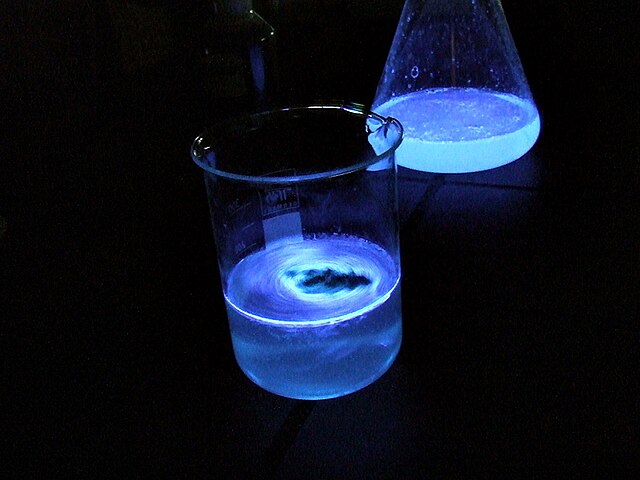Photoluminescence is light emission from any form of matter after the absorption of photons. It is one of many forms of luminescence and is initiated by photoexcitation, hence the prefix photo-. Following excitation, various relaxation processes typically occur in which other photons are re-radiated. Time periods between absorption and emission may vary: ranging from short femtosecond-regime for emission involving free-carrier plasma in inorganic semiconductors up to milliseconds for phosphoresence processes in molecular systems; and under special circumstances delay of emission may even span to minutes or hours.
Fluorescent solutions under UV light. Absorbed photons are rapidly re-emitted under longer electromagnetic wavelengths.
Luminescence is the "spontaneous emission of radiation from an electronically or vibrationally excited species not in thermal equilibrium with its environment". A luminescent object is emitting "cold light", in contrast to "incandescence", where an object only emits light after heating. Generally, the emission of light is due to the movement of electrons between different energy levels within an atom after excitation by external factors. However, the exact mechanism of light emission in vibrationally excited species is unknown.
Luminol and haemoglobin, an example of chemiluminescence
UV-photoluminescence in microbiological diagnostics



